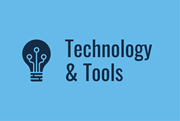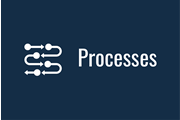Review of RCSEd Patient Safety Activity
The modern healthcare system is extremely complex and, with very many integrated parts, it can be difficult to maintain a holistic understanding of patient safety. Following an adverse event, it is relatively easy to recognise elements retrospectively which were ‘not safe’ however recognising these elements and their relative contribution proactively is much more challenging. Understanding how diverse elements such as training and regulation, local infrastructure, and rota design or workplace culture and physician wellbeing fit together is essential to be able to proactively manage safety.
RCSEd, through its Patient Safety Group, has adopted a ‘human factors’ approach to develop this holistic understanding of safety. One of its recent projects has been to adopt a patient safety model, known as the SEIPS model, to map out the complex contributing safety elements and their interactions.
The Patient Safety Group has used this model to analyse RCSEd college activity; providing a global overview of the Colleges’ safety activity and delineating the many elements it can mobilise to meet safety demands.
The SEIPS Model
The System Engineering Initiative for Patient Safety (SEIPS) model was developed in 2006; funded through the American Agency for Healthcare Research and Quality. It was developed as a model to help describe complex modern healthcare systems that recognises the many interactions and influences between people, tools, tasks, environment, and organisations that contribute to the delivery of safe care.
These five elements work together to influence healthcare processes which again work together to influence patient and staff outcomes. By characterising these elements and relationships the model allows us to identify potential points for improvement or intervention and to recognise how changes in one area may have consequences for, or influence on, another area of the system.
The model can be used proactively; to design or redesign aspects of a system, or retrospectively examine a system following an adverse event. The model is anchored in the industrial engineering discipline of human factors and endorsed by the UK professional body the Chartered Institute for Ergonomics and Human Factors (CIEHF) which has written is own White Paper on human factors in healthcare, available to view here.
Information for Patients
Surgery is often required to treat disease and save life, but there is always the potential for surgical treatment to cause harm. Keeping patients safe during their treatment is a fundamental part of surgical practice, and patient safety is embedded within the core values of the College.
With this in mind, the Patient Safety Group at the Royal College of Surgeons of Edinburgh has undertaken an extensive review of all college activity, with the aim of identifying areas of our work that influence patient safety within the wider healthcare system.
Surgical care is complex and recognising all the factors that contribute to good patient outcomes can be difficult. Many industries have taken a Human Factors approach in order to better understand this complexity. Human factors is a scientific discipline that aims to study human, technology, and systems interactions, in complex environments, such as healthcare.
A Human Factors approach has been applied here, by the Patient Safety Group, using the Systems Engineering Initiative for Patient Safety or SEIPS Model. The SEIPS Model breaks down surgical care into 5 component parts; Person, Organisation, Environment, Technology and Tools, and Tasks, recognising that all of these parts interact. These five component parts each influence care processes which in turn influence care outcomes.
The webpages included in the patient safety inventory are available for patients and will be used by our members as a resource for patient safety education. They cover the College’s patient safety activities and contain information, tools, and additional resources, presented using the SEIPS Model.
By adopting this systematic approach to safety the College has an objective way of understanding, reviewing, and improving patient safety. It can ensure that all of its activity is aligned and with the guidance of the Patient Safety Group, strive to meet its strategic goal of ensuring the best possible outcomes for patients worldwide.











